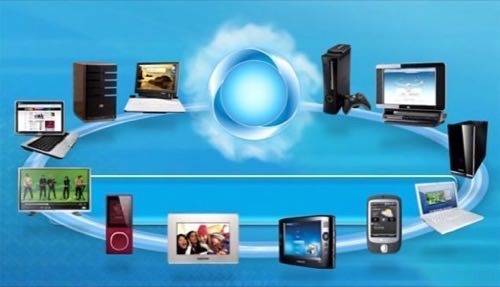One of the highlights last week at Web 2.0 Expo was the launch of Microsoft’s new cloud computing play, Live Mesh. Mesh is a new development platform for syncing user data between the desktop and the Web, and across multiple devices (currently just Windows computers, but it’ll support mobile, Mac computers and other devices in the future). It can sync data for single users, as well as create shared spaces for multiple users. Currently Live Mesh is in “technology preview”, so it is not a finished product. Even so, we couldn’t help but notice the overlap between Live Mesh and a number of Windows Live products.

To find out more about how Live Mesh will integrate with Windows Live, last week I sat down with Microsoft’s Brian Hall – GM of Development for the Windows Live Platform.
Where is Windows Live at?
We last spoke to Hall in June ’07 when the second generation of Windows Live launched. At that point there was a lot of confusion about the Windows Live brand – we noted that it was “still a fragmented vision, with a few too many products”. So I started off by asking Brian for an update on Windows Live and what the brand means nowadays. He explained that Windows Live is about people sharing and getting to “their stuff”. There are 3 parts to Windows Live, said Brian:

- Hosted services
- Peer to Peer
- Platform
Among the ‘hosted services’ layer there are products such as SkyDrive, which went beta last June. They also have Foldershare, a product that Microsoft acquired in 2005 that does P2P and remote tunneling for files.
Differences between Windows Live and Live Mesh
My next question was: how is the Live Mesh platform different to Windows Live? And where will the points of integration be? Hall said that Mesh is “a ground-up platform approach”, whereby apps and community are programatically integrated into other apps. So in the longer run, Microsoft plans to integrate the 3 Windows Live layers (hosted, P2P, platform) into one seamless experience, using the Mesh platform.
It still is a little confusing, but Brian Hall is the first to recognize that they have a lot of work to do. He told me that the current Live Mesh UI is a “proof of concept” at this point, but over time aspects of it will be integrated into Windows Live.
Live Mesh concept illustration; source: Microsoft

So over time, we will see Live Mesh become integrated into Windows Live products. Brian Hall said it’s unclear yet how that will play out, but for example we can expect SkyDrive (Microsoft’s online storage product) to utilize Live Mesh technology to enable better syncing across desktop and Web, and among different devices. Also the sharing features of Live Mesh will become integrated into various Windows Live products.
The gist of the conversation was that Live Mesh is a platform and so in future we will see Windows Live products utilize that platform for syncing and sharing.
What’s next for Windows Live?
As for Windows Live development, which Brian Hall is in charge of, he told us that we can expect to see new beta products in late summer / early fall. He also said that Microsoft is working on partnerships with social networks. At the end of March Microsoft announced the Windows Live Contacts API, enabling users to import and export their contacts and relationships from Windows Live to five popular social networks: Facebook, Bebo, Hi5, LinkedIn and Tagged. Microsoft also introduced a new website, www.invite2messenger.net, where people can invite their contacts from any of those five social networks to join them on Windows Live Messenger. We can expect more of that kind of data sharing functionality to emerge.
We can also expect to see further integration of Windows Live features into the MSN line of products – for example making user and community content more a part of the MSN news portal, via RSS, online video, social networking, and more. Hall used the word “intermingling” to describe how Windows Live products will integrate with MSN. The broad plan here seems to be to continue the MSN brand, but make it more personalized and social using Windows Live functionality. I would compare this to how the Yahoo homepage is evolving to become more like MyYahoo. Indeed, if Yahoo is acquired by Microsoft then Mesh technology merged with Yahoo content properties will be an exciting prospect!
Conclusion
Overall, there is still brand confusion in all of this – Live Mesh, Windows Live, MSN. But Microsoft is definitely tackling the Web in a big way, and the sync and sharing platform of Mesh is a key move by Microsoft to hook their desktop and Windows software advantage into the Web world.
Please tell us your thoughts on Mesh and Windows Live in the comments.










